Prepare yourself for sticker shock if you’re going to a car dealership for the first time since the outbreak.
The average cost of a new car reached $48,301 in August, a record high and an increase of 10.8% over a year earlier, as a result of a convergence of growing inflation, constrained supply chains, and a global battery shortage. The shift toward larger SUVs and trucks, which now account for almost 80% of U.S. automobile sales, is a significant element that automakers can influence. However, those variables are mainly outside of their control. Models that are smaller and more reasonably priced are quickly going out of production; in the past several years, automakers have axed dozens of sedan lines, including the Ford Taurus, Chevrolet Impala, and Volkswagen Beetle.
Henry Ford is credited with saying that Americans may choose any color for their Model T as long as it was black 100 years ago. In the near future, Americans will be able to own any size car they want, as long as it’s enormous. Additionally, they will pay more for all that weight.
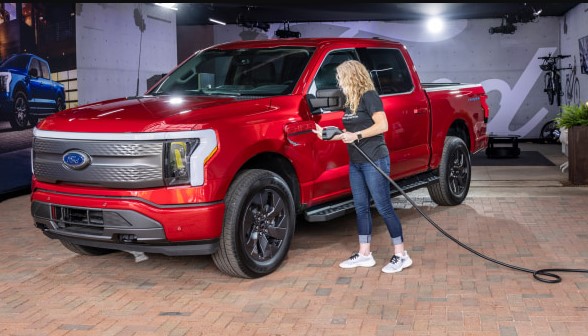
This tendency first appears to be advantageous for automakers. Compared to smaller vehicles, large SUVs and trucks are often more expensive and profitable.
However, automakers must exercise caution. They expose themselves to a potent sort of market disruption described in a classic management book 25 years ago by raising prices and increasing the size of vehicles.
What might the future of the automobile look like? in the ostensibly harmless shape of an e-cargo bike or golf cart.
The Innovator’s Dilemma, one of the most significant business books of the last 30 years, was released in 1997 by Harvard Business School professor Clay Christensen. According to Christensen, his book explains why “well-managed organizations that have their competitive antennae up, listen astutely to their customers, invest actively in new technologies, and still [lose] market domination” may achieve all of these things while still losing market share.
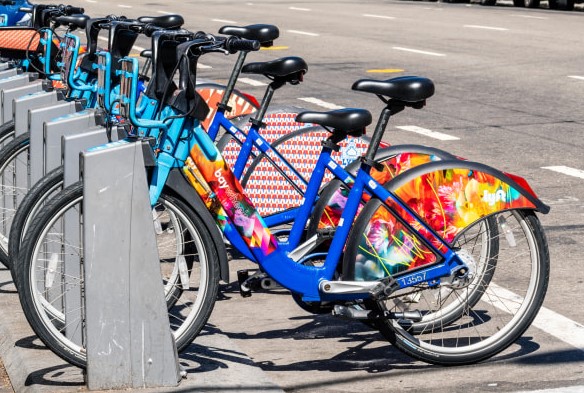
Christensen identified a recurrent pattern that allowed challengers to unseat established market leaders. The fundamental procedure went as follows:
The major players in an industry seek to improve by asking clients what new features they value the most. These buyers ask for a product that is bigger, better, and frequently more expensive than what is presently on the market. The market leaders then focus their R&D resources on addressing those modest demands, and the cycle repeats, resulting in goods that gradually get more complex.
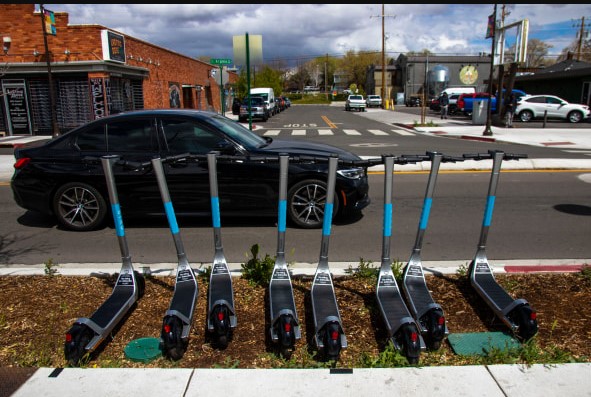
When something seemingly insignificant occurs: A new firm shows up with a product that is fundamentally different and offers considerably less performance at a cheaper cost. Leaders in the industry mock the new rival and its shoddy product. However, that subpar item ends up being “good enough” to draw in a small number of budget-conscious buyers, some of whom are impressed by the creative design despite its restricted utility. The competitor now has a foothold in the market and a chance to gain knowledge.
The competitor gradually uses its rising performance and decreased cost to draw in more clients. It is already too late for the incumbents to realize they are under serious peril. They have lost too much market share and lack the time and knowledge necessary to compete in a market that has changed. The challenger succeeds the incumbent as soon as they are completed.
Not all markets develop in the way Christensen predicted, but many do. The method through which Netflix ousted Blockbuster, the preeminent video rental chain of the 1990s, is a commonly cited example. Most Blockbuster customers were uninterested in Netflix’s initial DVDs-by-mail option because they were content to cheerfully check out video tapes at retail stores. However, fans of obscure films admired Netflix’s wide collection and didn’t mind having to wait to receive a DVD. Blockbuster was ultimately unable to compete with Netflix’s streaming capabilities because they provided it with enough early revenue. In 2010, Blockbuster declared bankruptcy. (Spiking the football, Netflix just debuted a new comedy show about the final Blockbuster location.)
Christensen coined the term “disruption” to describe this process, which has since been overused and clichéd. (The headline “Disruptive mayo is now a thing, and it’s spreading” appeared in 2014) Christensen passed away in 2020, but his concepts are still being discussed in Silicon Valley boardrooms and kombucha joints. The Innovator’s Dilemma has been ranked among the best business books of all time by Time, Business Insider, and the World Economic Forum.
Later, Christensen shifted his focus to examining innovation in the major industries, such as the automotive industry, which accounts for around 3% of U.S. GDP. Christensen and his colleagues were especially interested in determining whether Tesla was actually as disruptive as its supporters claimed.
Their verdict was a resounding “no.” Tesla was offering “incrementally greater performance at a higher price” as opposed to developing a brand-new, subpar product to undercut competitors, which Christensen categorized as a sustaining innovation as opposed to a disruptive one.
Christensen and his colleagues discovered a different kind of car, one that had the disruptive potential that Tesla lacked, during their investigation, though. A 2015 article in the Harvard Business Review said that such a device would not resemble a modern car in either appearance or operation. Instead, it “looks like an upgraded golf cart.”
Horace Dediu was a member of Christensen’s team that investigated innovation in the auto industry in the 2010s. He recently told me, “Cars are more than adequate. “It serves no purpose to improve them. Please let me know when you create a worse automobile.
He declared, “Micromobility is a terrible car.”
This phrase, micromobility, which includes bicycles, scooters, and cargo bikes, is sometimes credited to Dediu. Despite the fact that bikes and scooters have been around for well over a century, the introduction of compact electric batteries has been a revelation, allowing riders to easily handle steep slopes and humid weather (e-cargo bikes are especially helpful when lugging groceries or children).
A new automobile costs about $30,000, thus almost all micromobility equipment is only a few thousand dollars or less. The same is true for an emerging class of four-wheeled, electric, low-speed vehicles that resemble golf carts but are larger than micromobility devices and slower than cars.
Few individuals would choose an e-bike or a golf cart over a car for a lengthy trip, but many Americans might do so for the 60% of journeys that are under six miles. In addition to the potential financial savings, riding a golf cart or e-bike instead of a car makes parking simpler and provides a chance to enjoy the outdoors (and perhaps burn a few calories). Few tiny vehicles can travel faster than 25 mph, yet downtown traffic in many crowded cities rarely does.
Small automobiles have many characteristics that fit well with Christensen’s theory of disruption, such as cost, inferior performance when compared to full-size cars, and a fervent early fan following. In line with The Innovator’s Dilemma, initial purchases of golf carts, e-bikes, and other similar vehicles generate money for manufacturers to invest in creating better models, which can draw in new customers drawn in by improved performance and the significant price difference between a car and a small vehicle.
That distance continues getting bigger. Denver just made history by being the first municipality to offer all citizens a rebate of up to $1,700 on a brand-new e-bike or e-cargo bike, while states like Connecticut and California are getting ready to follow Rhode Island with their own initiatives. While interest rates are rising, automakers are raising their pricing. Recently, the average auto payment in the US surpassed $700 for the first time ever.
U.S. cars are getting bigger as they become more expensive, which highlights their shortcomings in cities (have fun squeezing your elephant-length Ford F-150 Lightning into a downtown parallel parking spot). Another trend that is expected to make more individuals consider if a small car may replace at least one of their family’s cars is the idea that small cars might be “good enough.” It is getting simpler to imagine how the automotive industry can be disrupted.
Dediu thinks that changing lexicons will serve as a warning indicator. When people, particularly young people who are edgy and hip, start talking about “scooting” and “riding,” activities that have nothing to do with vehicles, that is when it is finished, he claimed.
Most automakers aren’t displaying any signs that they are aware of this issue. Even if some rivals with foreign headquarters, like BMW and Porsche, are creating their own e-bikes, American powerhouses GM and Ford are really turning away from compact cars. General Motors debuted the Hummer EV, a monstrosity weighing over 9,000 pounds and costing over $112,000, a year after canceling its fledgling effort to produce an e-bike. Ford sold its shared e-scooter division, Spin, to Tier earlier this year. Since then, the firm has completely shifted its focus to trucks and SUVs, discontinuing all sedan sales in the United States.
The bigger and more expensive the car, the more U.S. auto executives seem to believe in them. Of course, they may counter that they are only providing models that are more extravagant and larger copies of what their clients have already asked for.
According to Christensen’s argument, that kind of thinking makes automakers seem like sitting ducks.
Already, there are changes in consumer preferences. The Wall Street Journal headline from two months ago read, “The Hottest New Car on the Market is an E-Bike,” and now, the United States sells more e-bikes than electric cars. Social media is flooded with endorsements from folks who use one instead of a car.

Golf carts are becoming more common in places like Scottsdale, Arizona, and downtown Tampa, where they are already common in suburban communities like The Villages, Florida, and Peachtree City, Georgia. The new manufacturer of the GEM, one of the most well-known low-speed vehicles, is moving away from institutional customers and toward selling directly to consumers. New user-friendly designs are also being developed—exactly the kind of product improvement that Christensen described among disruptive market challengers.
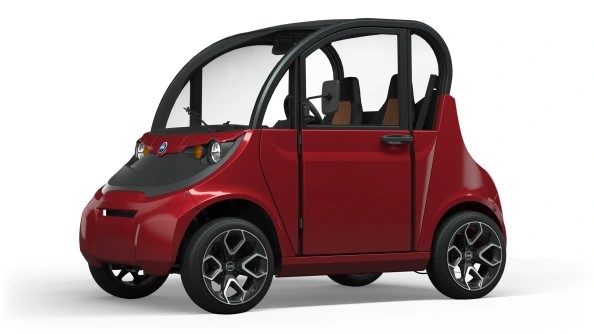
Notably, the GEM has windows and climate control, protecting you from bad weather. That responds to one of the complaints leveled most frequently by opponents of tiny vehicles. Small three-wheeled cars with a shell to protect occupants from the weather are being developed by other startups.
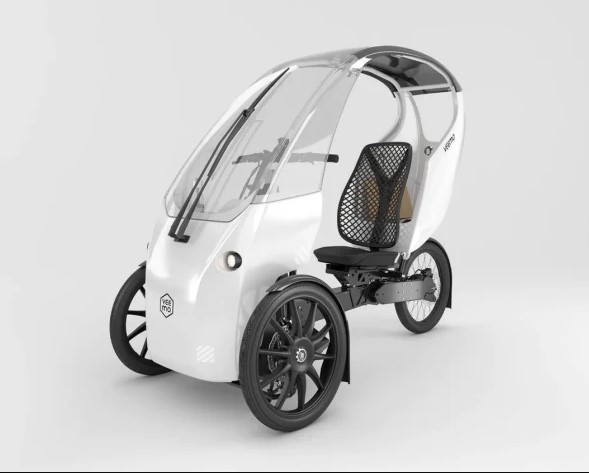
After a century of car-centric route construction, there are fewer safe locations in the US to ride or drive a tiny vehicle, which is a more difficult challenge. States like Massachusetts forbid bicycles and slow-moving vehicles from using faster roads and highways; even if they didn’t, few people would feel comfortable using a golf cart or an e-cargo bike next to 45 mph autos. Smaller vehicles may now go at the same speed as traffic thanks to the “20 is Plenty” urban speed campaigns, which are becoming more and more popular. Additionally, the expansion of protected bike lanes in American communities over the past ten years serves as evidence that modifying already-existing streets is both time-consuming and totally feasible. The District of Columbia has pledged to construct a record 10 miles of new protected lanes this year, while Boston Mayor Michelle Wu recently pledged to extend the city’s bike-lane network such that by 2025, half of all people will live within a three-minute walk of a protected lane.
However, nobody should anticipate that cars will become extinct any time soon. Even in Peachtree City, where there are almost as many registered golf carts as there are homes, people still drive their own automobiles for longer journeys and to travel into Atlanta, which is 27 miles away. But more importantly, a golf cart can replace a second or third vehicle, which would have otherwise been a car.
There are roughly 1.4 vehicles for every adult in the United States. It would be a seismic shift for the auto industry if only 25% of households decided to replace their second or third automobile with a tiny car. In a research released in September, C-suite guru McKinsey made the case that the market for “minimobility” might reach $100 billion by 2030.
Auto CEOs should be worried about the possibility of a quick transition to compact vehicles. But from a sociological standpoint, that might be a reality.
Smaller vehicles are significantly less dangerous in a collision than an SUV or truck due to their size, especially for people biking or walking (whose deaths have been skyrocketing in the U.S.). Small vehicles produce far fewer emissions than even electric cars when they are built and charged. The move away from fossil fuels is accelerated by the fact that an e-cargo bike or low-speed vehicle uses a minuscule fraction of the battery cells required to power an EV, freeing up valuable resources like lithium and nickel for use in other EVs.
Additionally, little vehicles might really make our neighborhoods a little friendlier in these divisive political times. Don’t believe anything I say: Kim Learnard, the mayor of Peachtree City, previously told me that residents frequently stopped on their golf carts in her neighborhood to visit with neighbors who were mowing their lawns. If you’re in a car, “you’re never going to do it,” she remarked.
For automakers, a collapse of the US vehicle market would be disastrous. For the rest of us, though, it would be reason to rejoice.
 Tech Gadget Central Latest Tech News and Reviews
Tech Gadget Central Latest Tech News and Reviews




